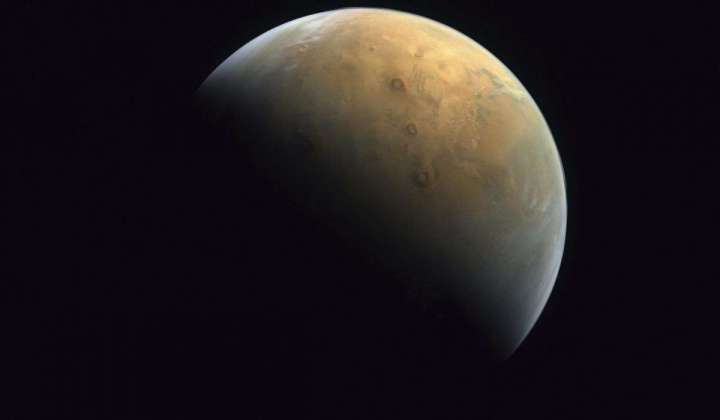Mars, here we come: NASA teaming up to make nuclear-powered rocket

NASA and the Defense Advanced Research Projects Agency are partnering to develop nuclear thermal propulsion rockets, with hopes of using the engines to send human crews to Mars, the space agency announced Tuesday.
“With the help of this new technology, astronauts could journey to and from deep space faster than ever — a major capability to prepare for crewed missions to Mars,” said NASA Administrator Bill Nelson in the space agency’s announcement.
The NASA–DARPA program, called Demonstration Rocket for Agile Cislunar Operations (DRACO), could be completed as soon as 2027. America has not undertaken nuclear rocket engine testing since the end of the Nuclear Engine for Rocket Vehicle Application (NERVA) program in 1973.
The upside of DRACO includes faster rockets and the ability to use more power on onboard scientific experiments and communications equipment. Speed offers greater safety for the crew.
“The key thing is that this will allow us to evaluate the opportunity to move faster. If we have swifter trips for humans, they are safer trips,” said NASA Deputy Administrator Pam Melroy at a panel at the American Institute of Aeronautics and Astronautics SciTech Forum on Tuesday, according to SpaceNews.
A DRACO nuclear rocket also offers two to five times more fuel efficiency than a chemical propulsion rocket.
“Since the [nuclear thermal rocket engine] uses propellant more efficiently, it offers more aggressive trajectories and creative burn profiles to move heavy cargo more quickly in the cislunar domain as compared to today’s in-space propulsion methods,” DRACO Program Manager Tabitha Dodson said in a DARPA release.
Cislunar refers to the space between the Earth and moon.
The two agencies will split roles on the DRACO project. NASA oversees the technical engineering of the nuclear rocket engine, which will go into a DARPA experimental spacecraft. DARPA will handle all the contracting and logistics work, including procurement, assembly and engine-craft integration.
This will not be the first time DARPA and NASA have teamed up.
“DARPA and NASA have a long history of fruitful collaboration in advancing technologies for our respective goals, from the Saturn V rocket that took humans to the moon for the first time to robotic servicing and refueling of satellites,” said DARPA Director Stefanie Tompkins.






